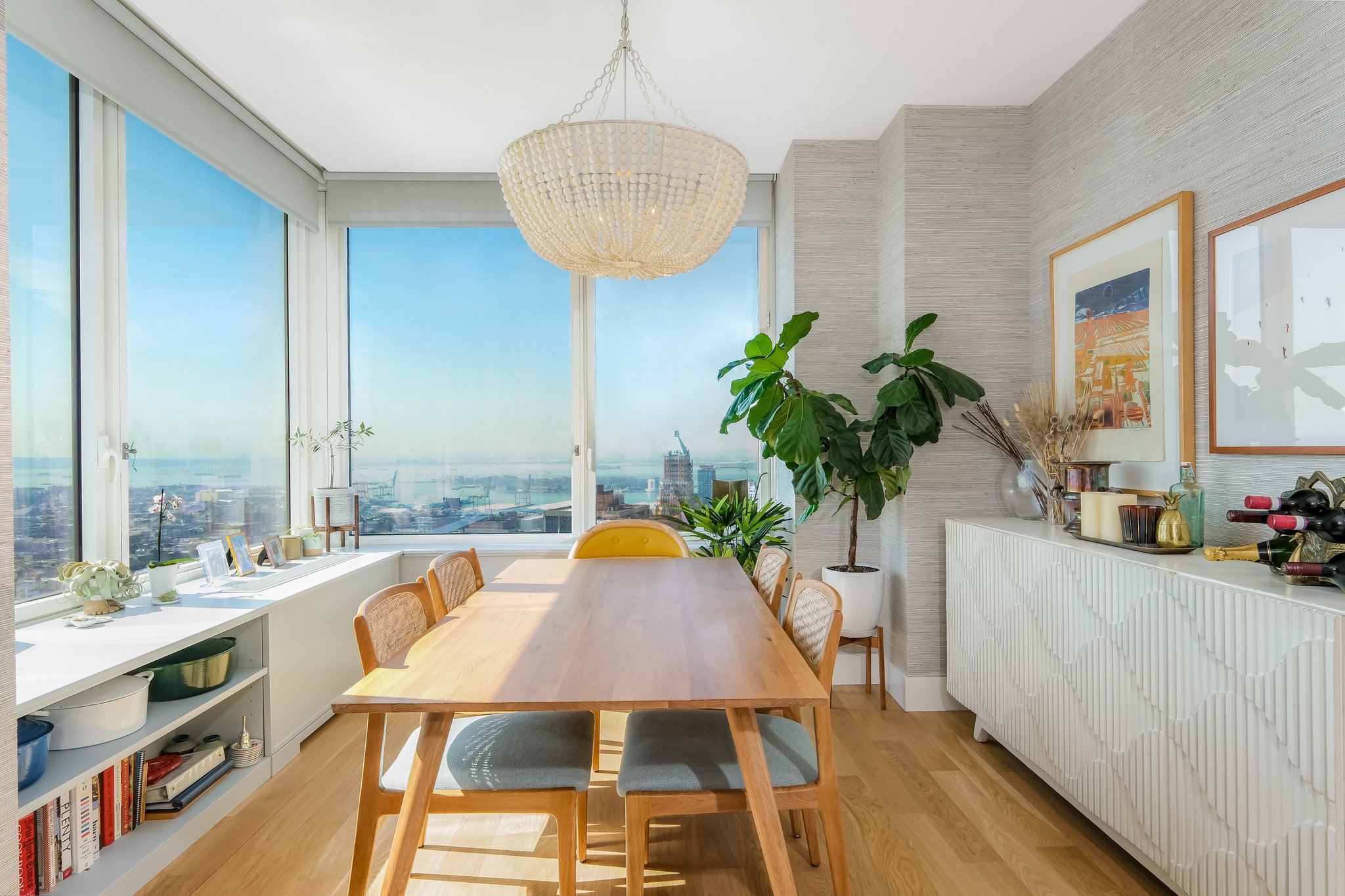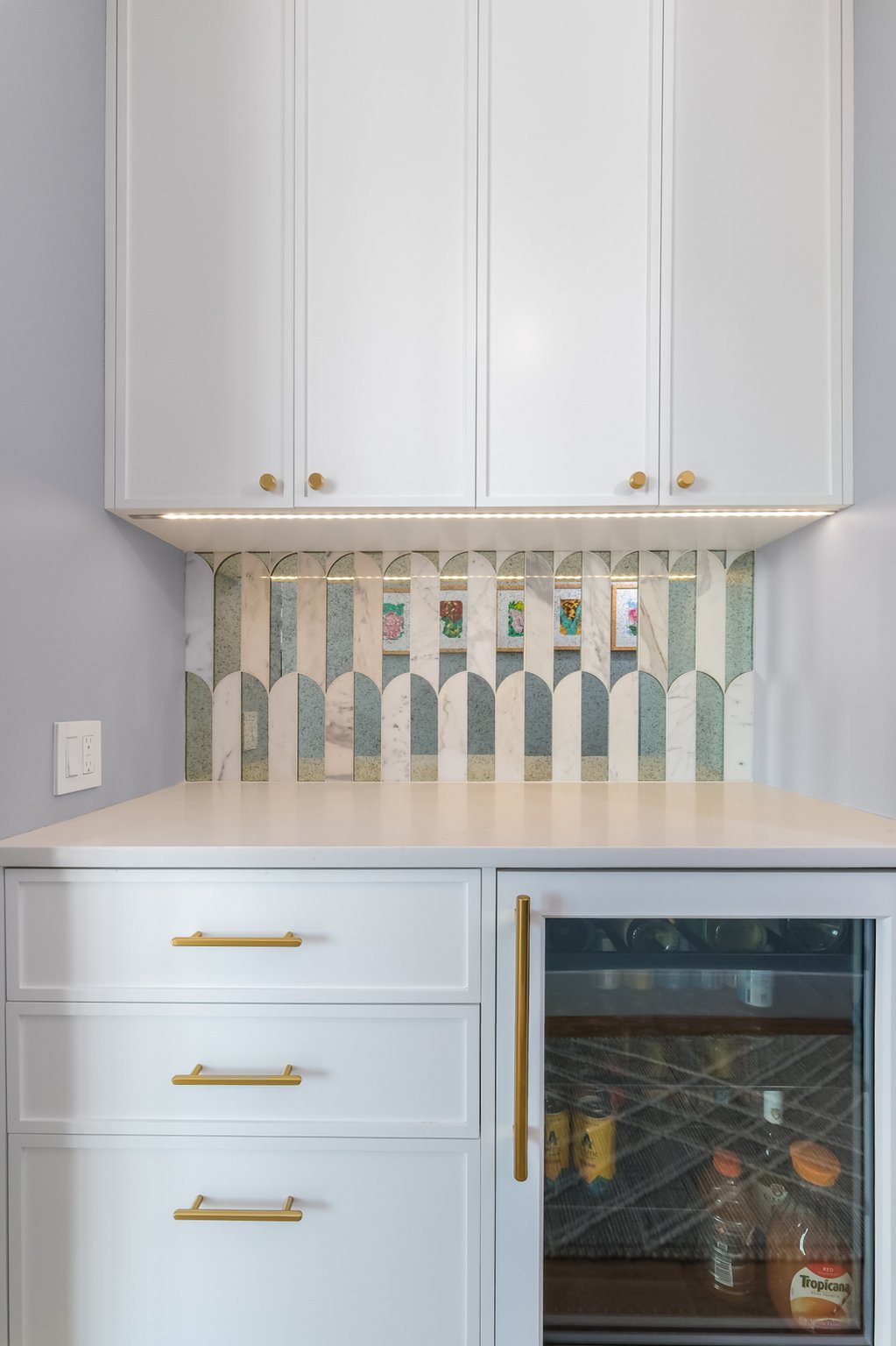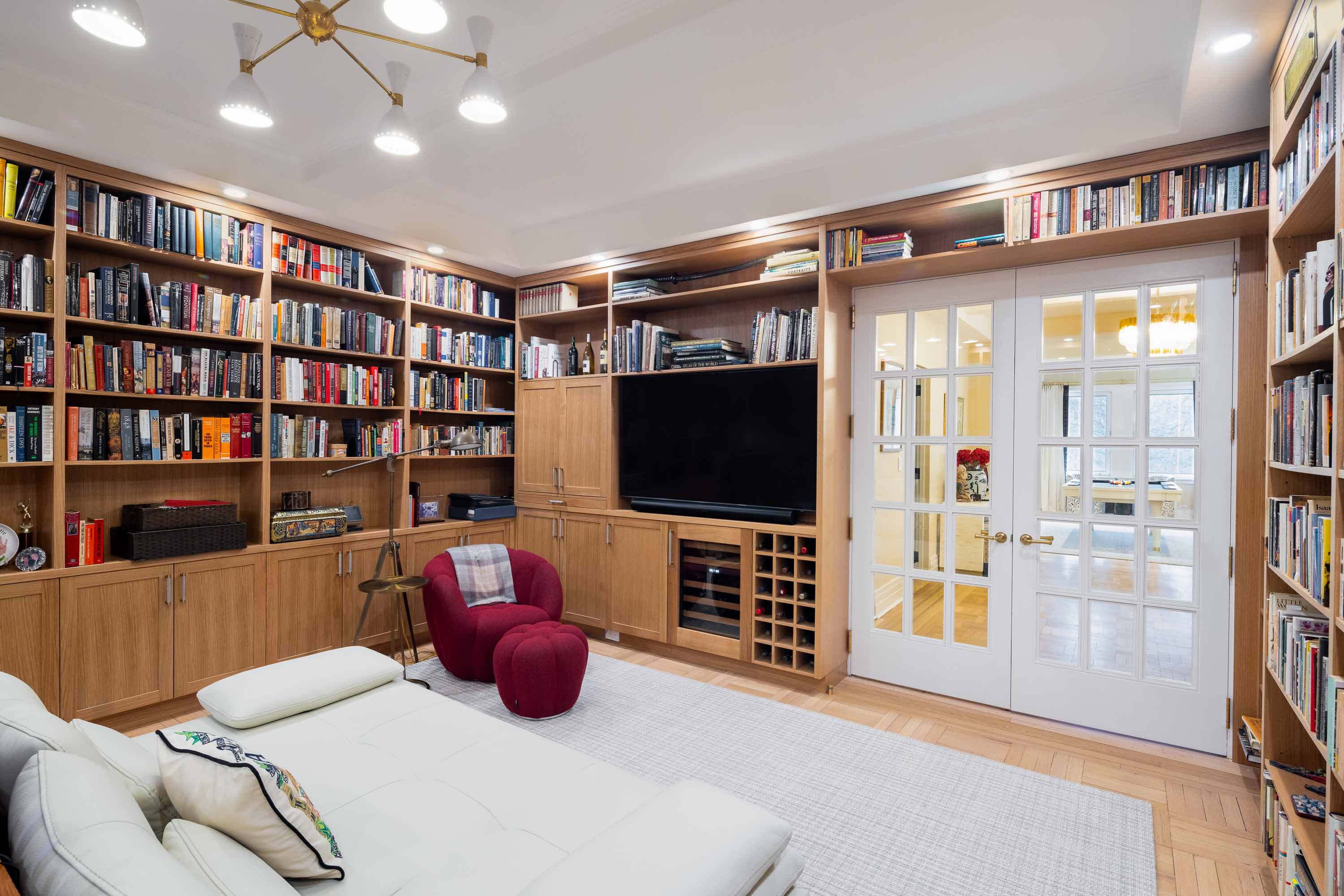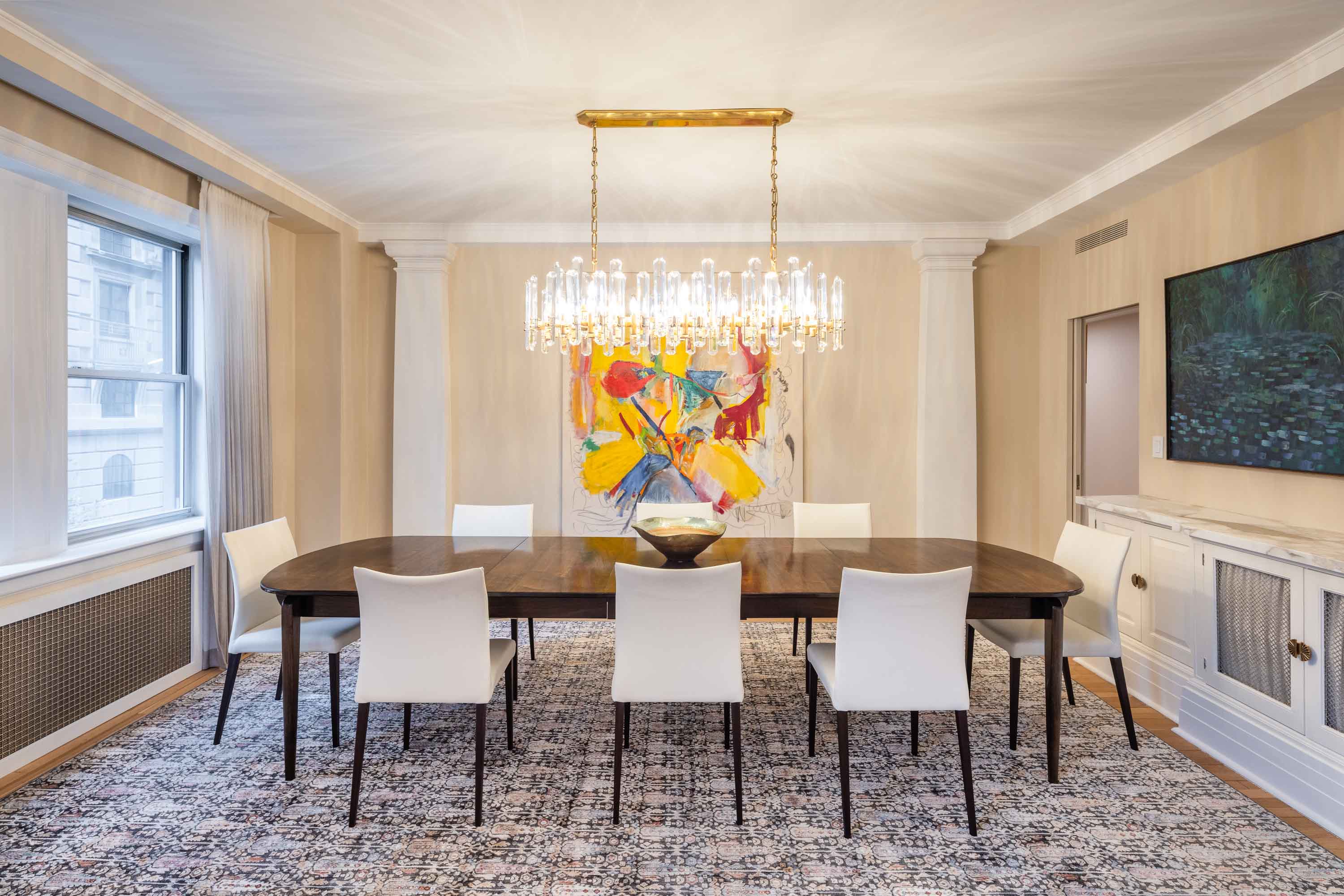The Homeowner's Guide to Renovation Methods: Contractors, Designers, Architects, and More
To help streamline your upcoming NYC renovation, we've created a client-friendly guide breaking down the roles of contractors, designers, design-build firms and architects and the types of projects they're best suited for.
November 6, 2024
|

The Homeowner's Guide to Renovation Methods: Contractors, Designers, Architects, and More
Starting renovation planning? Read an easy to digest breakdown of the various routes to renovate in NYC.
Table of contents
- Hiring A General Contractor For Your NYC Renovation
- Hiring An Interior Designer For Your NYC Renovation
- Hiring An Architect For Your NYC Renovation
- Hiring A Design Build Firm For Your NYC Renovation
- Selecting the Right Method For Your NYC Renovation
In New York City, where a home’s space, structure, and style each pose their own challenges, every renovation requires a thoughtful approach. That’s why choosing the right renovation partner—whether a general contractor, architect, design-build firm, or interior designer—is the most essential step in ensuring your project stays on track and meets expectations.
In this guide to NYC renovation methods, we’ll simplify each approach to help you find the right partner for your project, breaking down their respective characteristics and the jobs that make the most sense for each route. With this guidance, you’ll feel confident kicking off your dream home renovation with a partner who understands your vision, timeline, and budget.
-min.jpeg)
[#1]Hiring A General Contractor For Your NYC Renovation[#1]
In this traditional method of home renovation, a contractor works directly with the client to create a bid that includes only the cost of labor and the raw materials (sheetrock, electrical wiring, plumbing lines, etc.). The contractor is responsible for procuring materials and executing the project, while the client handles most of the logistics and design planning.
On one hand, homeowners are likely to save money because a designer or architect is not necessary. On the other hand, most homeowners are often not experienced renovation managers and can lack the expertise required for key elements of the renovation.
Homeowner Responsibilities When Working With A General Contractor
When partnering with a general contractor for your NYC renovation, expect a hands-on commitment. While contractors handle the bulk of construction, the homeowner is responsible for key tasks—defining the project’s vision, material oversight, and making timely decisions to keep things running smoothly. Here are essential responsibilities to prepare yourself for working with a traditional general contractor for your New York City renovation:
Define Project Scope And Budget
Clearly outline what you want to accomplish and set a realistic budget. This helps the contractor plan effectively and stay within financial limits.
Communicate Expectations and Preferences
Discuss your design preferences, materials, finishes, and any must-have features to avoid misunderstandings during the project. If you don’t have specific design plans in mind, you may need to hire an additional designer, or work with a full-service design-build contractor instead.
Obtain Necessary Permits
Although some contractors may assist, most traditional general contractors are not responsible for ensuring permits are secured. This means you must secure proper permits and get them approved, especially if specific requirements apply to your building or neighborhood.
Establish a Schedule And Checkpoints
Agree on a timeline with regular check-in points to review progress, ask questions, and make adjustments if necessary.
Maintain Consistent Communication
Be accessible for updates, questions, or decisions that may arise during construction, as delays in responses can impact the timeline.
Make Timely Decisions on Design Choices
Quickly decide on any change orders, upgrades, or material adjustments to avoid delays or additional costs. The larger the project, the more variability you’ll need to account for.
Ensure Compliance With Building Rules
Verify the general contractor adheres to your building’s renovation guidelines and coordinates with management as needed, including scheduling deliveries
Potential Pitfalls Of Working With A General Contractor
Below are the disadvantages of hiring a traditional design-bid-build general contractor for your NYC home renovation.
Change Order Disorder
Renovating a home almost always results in a few unexpected surprises. For instance, what happens when old cloth-wiring is encountered during demo? Or, how about if corroded plumbing is found in a pre-war condo? READ MORE: Common Surprises When Renovating A NYC Apartment. Without experienced project supervision and proper inspections from professionals at the right times in the process, planning for these hiccups becomes nearly impossible and change orders become likely.
Extended Timelines
When unforeseen circumstances happen like mentioned above, timelines will inevitably be extended.
Project Management Overload
Even though being in control of a renovation can provide firm hierarchy, the singular leadership can often become a burden for homeowners. Between balancing conversations amongst contractors, material selection and procurement, plus filing permits and getting approvals, the amount of moving parts are almost always better managed by seasoned professionals who regularly handle complex renovation projects and know exactly what to expect from every angle.
Communication Breakdown
With so many details requiring your attention, in addition to your regular routine, things can become chaotic and communication between you and your contractor may begin to slip. This is when delays happen and unnecessary change orders arise.
For more potential pitfalls and how to avoid them, drawing from 10 Questions To Ask A NYC General Contractor Before Hiring
-min.jpeg)
Projects Best-Suited For A General Contractor
Kitchen Only Renovations
For kitchen remodels that don’t require structural reconfigurations, hiring a general contractor can be an efficient route. Their expertise is in overseeing the hands-on work, such as replacing cabinets, updating appliances, installing countertops, and managing any necessary subcontractors. They excel in coordinating these elements and ensure each stage flows smoothly, keeping the project on schedule and within budget.
Bathroom Only Renovations
When updating a bathroom without altering its structure, general contractors bring critical expertise to keep the project flowing properly from demo to final punch list. They handle key elements like plumbing upgrades, tile work, lighting, and fixture installation, all while coordinating skilled trades and ensuring top-notch craftsmanship.
Millwork Only Renovations
Choosing a general contractor or carpenter for custom millwork in your NYC apartment means they will focus specifically on the craftsmanship involved in woodwork, bringing in-depth knowledge of materials, finishes, and joinery techniques to create tailored cabinetry, shelving, or built-ins that fit within your space.
TLDR: When To Hire A General Contractor For NYC Renovations
Best To Hire When:
- Budgets Are Smaller
- You Have Time To Manage Logistical Legwork
Better Off Without When:
- Renovations Are Significant In Size
- Renovations Require Structural Changes
-min.jpeg)
[#2]Hiring An Interior Designer For Your NYC Renovation[#2]
In this method of home renovation, the owner hires a designer to plan the entire space and choose the finishes for the project. The designer’s responsibilities often stop once designs are approved and ready to move into construction.
The designer is responsible for working with the homeowner to identify their aesthetic, creating renderings of the space, and selecting and procuring finishes. Designers also sometimes act as an independent owner’s agent to make sure the contractor sticks to the design plan.
When hiring an interior designer, the client benefits from access to someone who is creatively inclined to handle designing the space - but that tends to come with a substantial fee or even a percentage of the job cost of the contractor’s proposal. Designers also are unable to file plans or file for permits and don’t typically have construction experience.
Homeowner Responsibilities When Working With An Interior Designer
Working with an interior designer for your NYC renovation may require a good deal of involvement on your end. While the designer oversees the creative aspects and ensures aesthetic consistency, you’re faced with crucial tasks such as finding the proper build partner and facilitating the design transfer, plus making prompt decisions to maintain your project’s momentum. Here are key responsibilities that can help you prepare for a hands-on, collaborative renovation experience:
Provide Personal Design Preferences
When working with an interior designer, you’re putting them in the driver’s seat of your home’s design process. However, that doesn’t mean you can’t give them a preferred destination. To avoid getting designs that don't match your personal aesthetic, convey your personal design preferences at the outset of the design process. Provide mood boards and examples of design palettes you prefer to help guide ideas.
Define Project Scope and Budget
Working with an interior designer calls for hiring a separate general contractor, so keeping your full budget in mind is essential when planning your renovation. Start by establishing a realistic total budget, reserving around 10% for unexpected expenses, and then break down how much to allocate to each specialist. To accomplish this, outline the specifics of your project to understand what you want from each, then meet with various designers and contractors to compare their offerings and costs. A solid partner will give transparent cost estimates, but it’s crucial to find two who can collaborate effectively within your budget. This can sometimes be challenging, as working across teams can lead to details being miscommunicated and unplanned costs emerging.
Oversight & Approvals
Client approvals are a key part of the process when working with an interior designer for your NYC renovation. This includes signing off on proposed design elements, finishes, and layout suggestions. While your designer manages the creative and conceptual aspects, you’re also responsible for selecting a contractor who will carry out the physical work to match the approved designs. Additionally, you’ll need to stay engaged to ensure that the chosen finishes align with your preferences and that the project remains on course with the intended vision.
Obtain Necessary Permits
Although some interior designers may guide you through the permitting process, securing permits typically falls outside the standard scope of their work. This means it’s your responsibility to ensure that all necessary permits are in place and approved, especially for projects with specific building or neighborhood regulations.
Potential Pitfalls Of Working With An Interior Designer
Here are a few key potential pitfalls when working with an interior designer:
Misaligned Expectations
Clear communication is essential to ensure your vision aligns with your designer’s interpretation. Misunderstandings around goals, styles, and project outcomes can lead to results that don’t fully match your expectations, making up-front clarity a priority.
Budget Overruns
Interior designers may suggest high-end options that can stretch your budget if not managed carefully. Make sure you agree on a financial plan and review costs at each phase to avoid unexpected expenses.
Timeline Delays
Unforeseen delays are common in any renovation, and if your designer manages vendor relationships, delivery times or custom orders could extend the timeline. Frequent check-ins can help you stay aware of potential holdups.
Limited Contractor Oversight
Designers may not directly oversee every aspect of contractor work, which can lead to inconsistencies or overlooked details. Make sure you or a designated project manager keeps an eye on how the work aligns with the design plan.
Inflexibility With Changes
Some designers may prefer to stick to the initial vision, which can pose challenges if you wish to make adjustments mid-project. Discuss flexibility upfront to ensure your designer is open to modifications.
-min.jpeg)
Projects Best-Suited For An Interior Designer
Interior designers work best when your renovation focuses on the look, feel, and function of spaces without needing structural modifications. Here are the projects that suit them best:
Cosmetic Updates & Refreshes
For projects centered on changing finishes, colors, furniture, and accessories to enhance a room’s aesthetic, interior designers bring the utmost expertise in selecting materials, textures, and colors that align with your vision.
Custom Millwork And Built-Ins
Designers often collaborate with skilled tradespeople to create custom cabinetry, shelving, and other built-ins that elevate both the functionality and style of a space.
Styling For Cohesive Design
If you’re aiming for a specific style or need help blending existing pieces with new additions, designers can pull everything together to create a harmonious look across your home.
Decorating And Accessorizing
For projects that involve selecting art, rugs, or decor items, interior designers are skilled at sourcing unique, high-quality pieces to bring character to each room.
TLDR: When To Hire An Interior Designer For NYC Renovations
Best To Hire When:
- Aesthetic Improvement Is Focus Of Renovation
- Owner Does Not Have Clear Vision Of What The Space Should Look Like
- Projects Are Smaller In Size
Better Off Without When:
- Project Requires Structural Changes
- Budget is Primary Concern
- Design Vision Already Defined
- Your Focus Is Practical Updates

[#3]Hiring An Architect For Your NYC Renovation[#3]
In this method of home renovation, the owner hires an architect to design the entire space, from layout to finishes. The architect will also file plans, act as the owner's agent in procuring a contractor, and supervise the project. This method is best suited for projects that involve significantly altering the space, such as building new rooms or converting a property from a single-family to a multi-family residence.
The architect is responsible for designing the space, creating plans, filing those plans with the Department of Buildings, bringing in a contractor or opening up bidding to multiple contractors. Some architects will oversee the project once construction starts, but many will leave simply pass off the plans and leave the project management to the client.
As with designers, architects typically charge a substantial fee for their services or a percentage of the job cost of the contractor’s proposal, often up to 30% of the project cost.
Homeowner Responsibilities When Working With An Architect
When working with an architect on a home renovation, homeowners play an essential role in shaping and guiding the project. Here’s what to expect:
Set Clear Goals And A Realistic Budget
A successful project starts with clarity on what you want and how much you’re comfortable spending. Sharing these details early helps the architect design within your means and keeps expectations in check.
Review And Approve Plans
As design drafts and revisions come through, take time to review each one and give feedback. This way, you’ll spot anything that might need adjusting before it’s set in stone (or drywall).
Stay In Communication
Regular check-ins help keep the project on track and allow you to weigh in on unexpected decisions. Being responsive can also prevent delays and costly last-minute changes.
Choose And Coordinate With Contractors
While your architect focuses on design, it’s usually up to you to choose contractors (unless the architect offers project management). Working together helps ensure a smooth handoff from design to build.
Potential Pitfalls Of Working With An Architect
Below are some disadvantages of working with an independent architect for NYC home renovations:
Excessive Material Costs & Less Design Control
While most independent architects pass off the project once design is settled, some will stay involved as an owner’s agent. This turnkey architectural approach suits clients with flexible timelines, budgets, and undefined scopes. Yet, that approach isn’t for everyone.
As architects focus on extravagant, creative designs for industry recognition, clients often face higher material costs and reduced design control. Think indoor atriums or water features that use exotic materials. Sounds amazing, but how practical is the feature? Such architectural exclamation points can inflate your budget by 50-100%, often leading to late-stage change orders and a disconnect between the vision and practical reality. All of this makes accurate upfront budgeting difficult to pin down.
Design Timelines Can Stretch
Getting a design just right takes time, and architects are detail-oriented by nature. This meticulous process, though rewarding, can add weeks (or months) to your project if there are multiple revisions. In a fast-paced city where schedules are sacred, be prepared for a design timeline that might stretch longer than expected.
Permitting Can Get Complicated
Even with an architect at the helm, surprises in permitting or code requirements can still pop up. Especially in NYC, where every building and neighborhood can have unique codes and restrictions, stay proactive on these local hoops to avoid delays and potential added costs.
Less Involvement On The Build Side
Some architects see their role ending at design, leaving day-to-day construction management to others. If you’re expecting them to be there through the final walkthrough, confirm this upfront to ensure your architect’s hands are on deck during the build stage.

Projects Best-Suited For An Architect
Full Apartment Renovations
An architect is a strong option, as their strategic services will guide your full apartment project in full. However, what separates an architect from a design-build firm is that an architect will outsource the construction aspect of your renovation, which typically comes with added costs and coordination from the client. Additionally, architects are typically a more expensive option over design-build forms. For more distinction on the two approaches, read our blog, The Pros And Cons Of Design-build Vs. Architectural Firms.
Apartment Combinations
While architects may offer proper guidance for you when combining two apartments in NYC, they will likely be outsourcing the construction part of the renovation to a separate contractor. Whereas, a full service alternative such as a design-build firm has every party involved in your renovation working under one roof, leaving much less room for miscommunication and set-backs - which is essential during such a complex renovation.
Full Gut Renovation
Hiring an architect for your gut renovation makes sense if you already have a strong, detailed vision for the space and prefer dedicated architectural expertise. Architects excel at ensuring structural integrity, reimagining layouts, and focusing on design details that optimize flow and function. However, unlike design-build firms, an architect does not typically oversee the construction phase. You’ll need to work with an additional contractor to bring the plans to life, requiring more coordination on your end. While this approach offers in-depth architectural insight, it’s best suited for those who feel comfortable managing separate design and build relationships throughout the project.
TLDR: When To Hire An Architect For NYC Renovations
Best To Hire When:
- The Project Is Extremely Complex (IE: Combining Two Townhouses Vertically)
- You’re Aiming For Award-Winning Custom Design
- Budget Is Not A Concern
Better Off Without When:
- Your Project Doesn’t Require Major Structural Changes
- You’re Working With A Limited Budget
- Your Vision Is Clear And Straightforward
- You Prefer a Faster Timeline
-min.jpeg)
[#4]Hiring A Design Build Firm For Your NYC Renovation[#4]
In this all-inclusive method of home renovation, a design-build firm like Gallery works with the owner from start to finish to design a space, file plans, select and procure finishes, and execute the build. This method is best suited for mid-sized to large renovation projects, especially where the owner has a mid-level budget (not looking for the most affordable or most expensive option), as well as projects where the owner is not looking to manage the work.
The design-build firm is responsible for creating and filing architectural drawings, designing the space, selecting and procuring finishes and fixtures, obtaining all permits and file plans, and executing the build.
This tends to be the least stressful option for owners because they are almost entirely hands-off from the beginning of the project. They also know exactly what they are paying for upfront, with no additional architect and design service fees based on the project cost. This method also maintains all moving parts under one roof, which means there is far less room for error as multiple unrelated companies are not all touching the project.
Homeowner Responsibilities When Working With A Design Build Firm
Among all the available renovation options, the design-build approach requires the least amount of effort from the client.
Client’s Role in Approving Design and Finishes
In a design-build partnership, your main responsibility is to approve or decline the proposed designs and finishes. While the firm manages the project, your feedback is essential to ensure the outcome reflects your vision.
Engaging in this process means carefully reviewing sketches and materials and providing clear input on your preferences. This collaboration fosters trust and open communication, allowing the design team to refine their work based on your insights.
Though you won’t oversee daily operations, your active participation in the approval process is key to creating a space that feels uniquely yours, ultimately leading to a smoother renovation experience.
Potential Pitfalls of Working with a Design-Build Firm
While the design-build approach can simplify your renovation process, it’s important to recognize its potential drawbacks. Without an independent agent representing your interests, you might question how effectively your needs are being met. Reputable design-build firms prioritize quality and service, employing dedicated project managers to oversee every detail. Understanding this structure can enhance your design-build experience and help you navigate any concerns.
Understanding Oversight and Accountability
A key consideration in the design-build model is the lack of an independent owner’s agent to supervise the work. This absence can make some clients feel uneasy about representation. However, established firms focus on transparency and quality. At Gallery, our project managers ensure smooth communication and comprehensive oversight, keeping you informed throughout the process. By fostering this level of accountability, we aim to enhance your renovation journey, allowing you to concentrate on the exciting transformation ahead.
-min.jpeg)
Projects Best-Suited For A Design Build Firm
Full Apartment Renovations
Design-build firms are a highly suitable solution for full apartment renovations in NYC due to their integrated approach, offering a single point of responsibility for both the design and construction phases. This comprehensive model promotes efficient communication, cost and time savings, plus a streamlined process as the design and construction teams collaborate seamlessly. As a design-build firm, we address all permits and approvals on behalf of clients.
Kitchen & Bathroom Renovations
Renovations that typically lend highest ROI are kitchen and bathroom renovations. These essential spaces immediately enhance the overall appeal and functionality of an apartment, making them more attractive on the market and in person. When considering a kitchen and bathroom renovation, the most effective approach is a design-build firm, with their all-inclusive renovation style. While other methods, such as hiring a contractor, will suffice and possibly offer more cost flexibility, those singular solutions typically require you to coordinate supporting contractors (electricians, plumbers, etc) and board approvals plus permits.
Apartment Combinations
While this renovation type is not readily available due to building regulations and ownership constraints, combining two apartments in NYC offers the rare opportunity to transcend the spatial limitations prevalent in many of the Big Apple’s iconic abodes. To achieve such a customized and complicated renovation, there are only two routes to go - design-build firm or architect. Both solutions offer the strategic overview required to execute apartment combinations in NYC.
Full Gut Renovation
For a full gut renovation, a design-build firm often provides the most cohesive experience. These firms handle everything from architectural planning to interior design and construction under one roof, resulting in a streamlined approach that supports both the creative and technical aspects of your project. With the integration of design and construction teams, design-build firms simplify communication, reduce delays, and ensure that each element aligns with your vision. This is especially useful if your concept isn’t fully developed, as design-build firms bring interior designers on board early in the process, helping to shape every detail to match your needs and preferences.
TLDR: When To Hire A Design Build Firm For NYC Renovations
Best To Hire When:
- Your Project Requires Structural Changes
- Your Design Vision Is Clear and Straightforward
- You Don’t Want To Manage The Project
Better Off Without When:
- The Project Doesn’t Involve Major Changes
- Your Budget Is Limited
- You Want Separate Interior Design

[#5]Selecting the Right Method For Your NYC Renovation[#5]
With a clearer understanding of the best fit for your renovation project, take some time to outline your personal preferences. Once you’ve established the following priorities, you’ll be well-equipped to confidently reach out to potential renovation partners.
Budget Considerations
First and foremost, evaluate your personal financial parameters. Architects tend to command higher fees, which may not fit every renovation budget. For smaller projects that require cost efficiency, general contractors often provide a streamlined approach, but once structural changes or interior design requirements come into play, you’ll need to hire additional partners to fulfill your full renovation. Design-build firms offer integrated services that help maintain financial oversight throughout the renovation, while easing the management burden on clients.
Project Complexity
Next, evaluate your project’s complexity. If significant structural changes are involved and you want interior design with award-winning appeal, hiring an architect is wise. For cosmetic updates that don’t alter the layout, general contractors or interior designers can effectively manage the work without needing architectural input.
For complex renovations that don’t require extravagance, design-build firms offer a streamlined solution by combining design and construction. This client-first approach is built on clear communication and reduces the risk of misalignment between design and execution. If an architect’s high-end touch isn’t essential, a design-build firm can deliver efficiency and quality, facilitating a smoother renovation process.
Level Of Engagement
Your desired level of involvement in the renovation process is also an important factor. If you want to actively participate in design choices, working with an interior designer can be an excellent fit. Conversely, if you prefer a more hands-off experience, design-build firms (larger projects with structural changes) or general contractors (smaller projects w/o structural changes) can manage the entire project, allowing you to focus on other priorities.
Project Timeline
Consider your timeline when making your choice. Architects often have longer design phases, which can delay the start of your project. If a quicker turnaround is essential, opting for a general contractor or a design-build firm may provide a more efficient path to completion.
Personal Design Preferences
Lastly, think about your specific design preferences and needs. If you have a clear idea of what you want, an interior designer or design-build firm can help bring that vision to reality. For more unique or lavish designs, the expertise of an architect may be necessary to navigate complex details and ensure your ideas are fully realized.

Taking The Next Steps Towards Your NYC Renovation
If you’re planning a home renovation in New York City and want the most streamlined experience possible, consider the value that a design-build firm may bring to the table. At Gallery, our extensive experience in renovating residential homes in NYC ranges from pre-war apartments and century-old townhomes to 4,000+ SF co-ops and luxury sky lofts, with all of our jobs delivering a full-service, all-inclusive approach for our clients.
Considering an apartment renovation in New York City? View our portfolio of NYC apartment renovation before and afters, learn more about Gallery, or contact us today.
We are an award-winning design-build firm in New York City with a full-service approach to renovations in Manhattan and Brooklyn that includes everything from interior design and architecture services to filing permits and construction management. We’re experts in pre-war apartment renovations, apartment combinations, room creations, full gut renovations and all that falls in between. Let us bring your dream home to life

.png)
.png)





.jpg)

%20(2).jpg)


.jpg)
%20Gallery%20KBNY.JPG)


